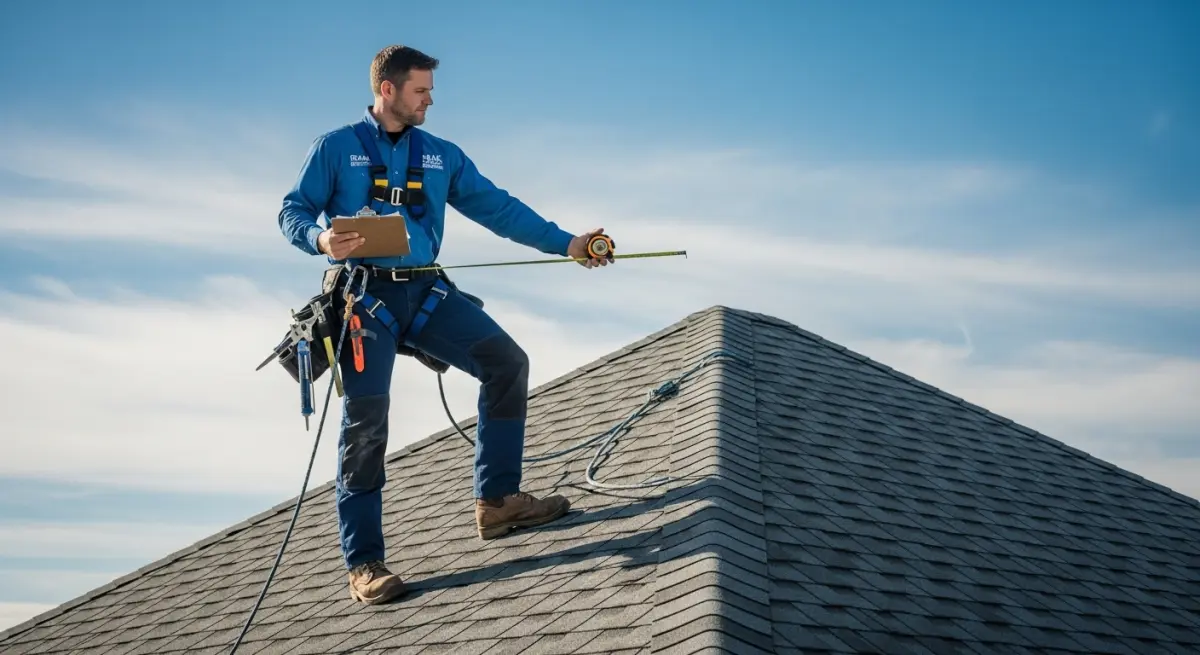Can You Paint Shingles on a Roof? Pros, Cons, and How-To
Homeowners looking at faded, discolored asphalt shingles often wonder: can you paint shingles on a roof? The short answer is yes—but success depends entirely on your roof's condition, choosing proper materials, and understanding realistic expectations. Painting roof shingles offers a temporary cosmetic solution that costs far less than replacement, yet it comes with significant limitations. This guide examines the complete picture: when painting makes sense, the actual pros and cons, materials that work, and the step-by-step process to achieve results that last.
Yes, You Can Paint Roof Shingles—But Should You?
Painting asphalt roof shingles is physically possible and can temporarily restore appearance for 3-7 years. Quality roof coatings designed specifically for shingles flex with temperature changes, resist UV degradation, and handle constant weather exposure that destroys regular paint within months. The key word here is "temporarily"—painted shingles never match the protection or longevity of new roofing.
The critical question isn't whether you can paint shingles on a roof, but whether you should. If shingles show structural damage like curling, missing granules, or brittleness, paint only masks problems while they worsen underneath. Consider painting only when shingles remain structurally sound but look faded from sun exposure. For damaged roofs, explore roof replacement options that provide lasting protection instead of temporary cosmetics.
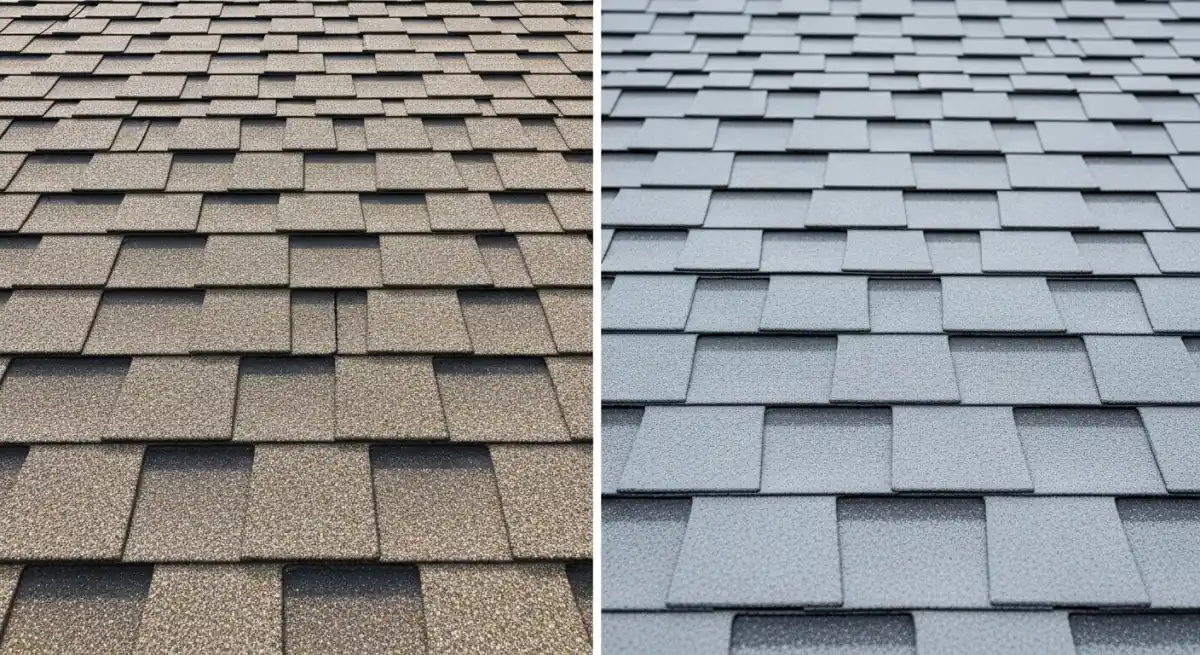
Pros of Painting Roof Shingles
Painting roof shingles delivers several benefits when applied to suitable candidates. Lower cost represents the biggest advantage—professional painting runs $2-4 per square foot versus $5-12 for replacement. DIY painting costs just $400-800 in materials for typical 2,000 square foot roofs, making it extremely budget-friendly for homeowners facing financial constraints.
Quick aesthetic improvement appeals to sellers preparing homes for market. Fresh paint restores curb appeal within days instead of the weeks required for full replacement. Color flexibility lets you update appearance to match new exterior color schemes without expensive tearoff. Some roof coatings offer reflective properties that reduce cooling costs by 10-15% during summer months, providing modest energy savings alongside cosmetic improvements.
Cons of Painting Roof Shingles
Short lifespan tops the list of painting disadvantages. Even properly applied coatings last just 3-7 years before requiring recoating, versus 20-30 years for new shingles. Frequent recoating means you'll likely spend more over time than replacement would have cost while gaining less protection throughout.
Paint cannot fix structural problems. Curling, cracking, or missing shingles continue deteriorating beneath cosmetic coatings. Leaks persist and worsen regardless of surface appearance. Poor adhesion on severely weathered shingles causes rapid peeling within 1-2 years, wasting your entire investment. Many manufacturer warranties void if you paint shingles, eliminating protection for any manufacturing defects. These limitations explain why replacement costs often represent better long-term value despite higher upfront expenses.
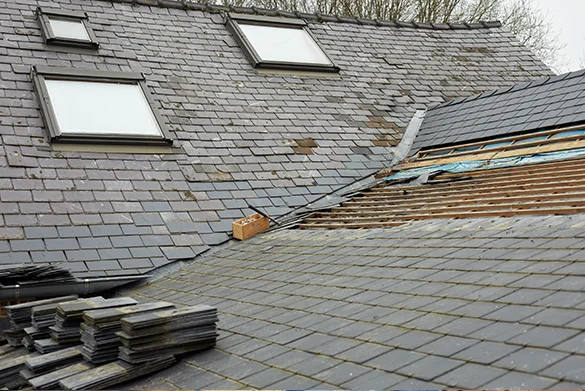
When Does Painting Roof Shingles Make Sense?
Ideal candidates for roof shingle painting meet specific criteria. Shingles should be structurally sound—lying flat without curling, retaining most protective granules, showing no cracks or brittleness. Age matters too; roofs with 5-7 years or more of remaining service life justify painting. Younger roofs under warranty shouldn't be painted to avoid voiding coverage.
Short-term homeownership makes painting practical. If you plan to sell within 3-5 years, painting boosts curb appeal at minimal cost without investing in replacement you won't personally benefit from. Budget constraints sometimes force choosing between painting now or replacement delayed several years. In such cases, painting buys time if you fully understand its temporary nature. Avoid painting if you see extensive granule loss, widespread damage, active leaks, or shingles approaching 20+ years old. Those conditions demand replacement with quality materials that solve problems permanently.
Choosing the Right Paint for Roof Shingles
Never use standard house paint on roof shingles. You need specialized acrylic roof coatings or elastomeric paints formulated specifically for asphalt shingles. These products remain flexible during temperature swings from -10°F winter lows to 160°F+ summer surface temperatures. Standard paint cracks and peels within months under such conditions.
Quality 100% acrylic roof coatings include built-in mildew resistance and UV blockers that extend lifespan. Elastomeric formulas create thicker, more flexible films ideal for shingles with minor surface imperfections. Look for products explicitly rated for asphalt shingles with manufacturer specifications for temperature range and longevity. Expect to pay $50-80 per gallon for quality coatings that cover 75-100 square feet per gallon per coat. Choosing proper materials proves as critical as application technique for achieving results that last. Similar attention to materials matters when considering TPO roofing or other modern systems.
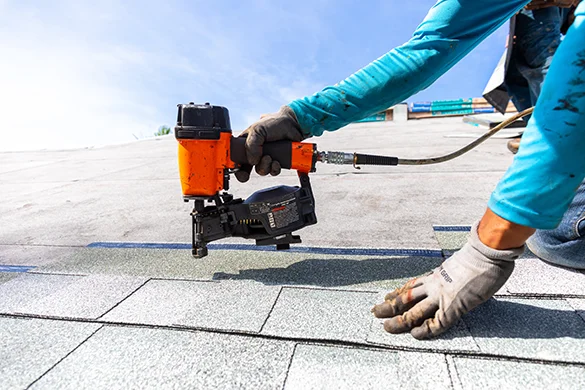
Roof Preparation: Critical for Success
Thorough cleaning determines whether paint adheres properly or fails within months. Remove all debris—leaves, branches, dirt. Treat algae, moss, and mildew with roof-safe cleaners, allowing proper dwell time before low-pressure rinsing. High-pressure washing strips protective granules, so use gentle water flow only.
Allow 48-72 hours drying time after cleaning. Hidden moisture under shingles causes bubbling and peeling. Inspect during cleaning and repair any damaged shingles, secure loose edges with roofing cement, and seal cracks. Replace severely damaged shingles before painting. These preparation steps take more time than actual painting but make the difference between coating that lasts versus one that fails immediately. Proper inspection practices mirror those used when evaluating repair versus replacement decisions.
Application Process: Primer and Paint
Most quality roof coatings don't require primer on shingles in good condition. Severely weathered or porous surfaces benefit from bonding primer that improves adhesion on damaged areas with significant granule loss. Apply primer in thin, even coats using airless sprayer or thick-nap roller designed for rough surfaces.
For topcoat application, airless sprayers provide fastest, most uniform coverage. Use 0.017-0.021 inch spray tip at consistent 12-14 inch distance. Overlap passes by 50% to avoid thin spots. Start at roof peak and work downward to avoid walking on fresh paint. Back-roll sprayed areas to work coating into shingle texture. Apply at least two coats, allowing 24-48 hours drying between coats. Rushing drying time traps moisture that causes blistering later. Work only in dry weather with temperatures between 50-85°F for optimal adhesion. Understanding proper application techniques ensures better results.
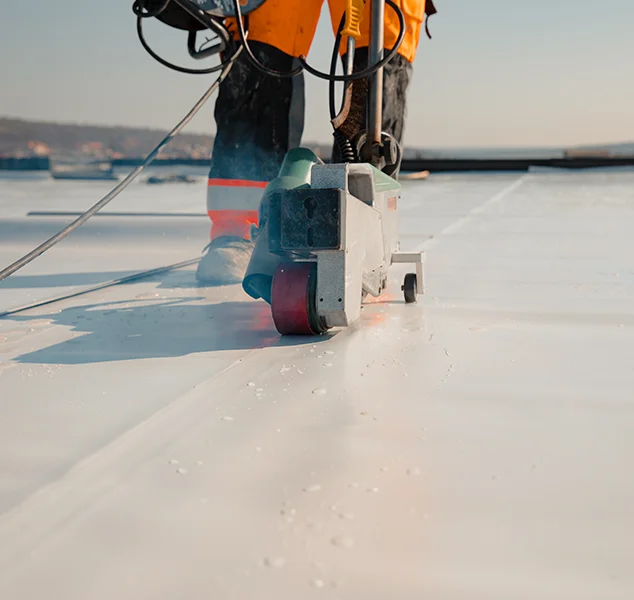
Cost to Paint Roof Shingles
DIY roof shingle painting costs $400-800 in materials for average 2,000 square foot roofs. This includes quality acrylic coating ($50-80/gallon, need 6-8 gallons for two coats), cleaning supplies, primer if needed, and application tools. Renting an airless sprayer adds $100-150 for weekend use, or purchase entry-level units for $200-300.
Professional painting runs $2-4 per square foot including labor and materials, totaling $4,000-8,000 for typical roofs. Professionals complete work in 2-3 days versus DIY weekend or two, carry insurance protecting you from liability, and typically offer 1-3 year workmanship warranties. While expensive compared to DIY, professional costs still run 40-60% less than complete roof replacement averaging $8,000-15,000 for similar-sized projects.
How Long Do Painted Roof Shingles Last?
Expect properly applied roof coatings to last 3-7 years depending on climate, product quality, and application skill. Northern Virginia's temperature extremes, humidity, and UV exposure stress painted surfaces. Most coatings need reapplication every 4-5 years to maintain protection and appearance.
Compare this limited lifespan to 20-30 years for new asphalt shingles, 40-50 years for metal roofing, or 25-30 years for EPDM systems. If you paint twice over 10 years, you've spent nearly as much as replacement would have cost while gaining significantly less protection. Factor recoating costs into your decision—painting makes sense only as short-term solution when you understand the ongoing maintenance commitment.
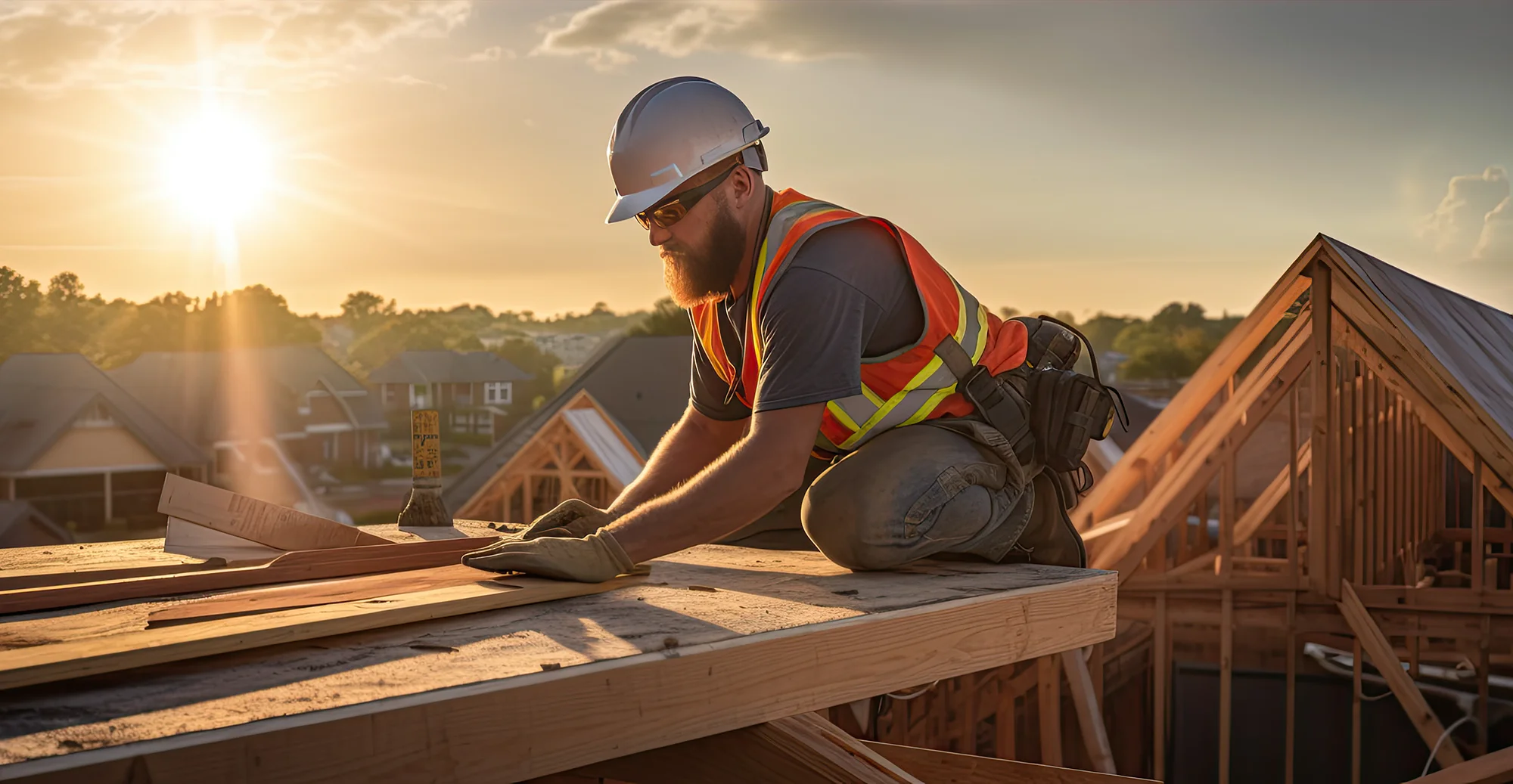
Maintenance After Painting Shingles
Painted roofs require diligent maintenance to reach even modest 5-7 year lifespan. Inspect annually for peeling, cracking, or fading. Clean gutters to prevent water backup that damages painted edges. Remove debris promptly—accumulated leaves trap moisture accelerating paint failure. Treat any biological growth immediately with roof-safe cleaners.
Address small areas of peeling with touch-up paint before damage spreads. However, widespread peeling or fading signals complete recoating time. Neglecting maintenance reduces lifespan to 3-4 years instead of 5-7. Budget time and money for ongoing care when deciding whether painting makes sense for your situation. Regular maintenance prevents issues similar to those addressed through comprehensive roof care programs.
Alternatives to Consider Instead of Painting
Before committing to paint roof shingles, evaluate alternatives that might deliver better value. Professional cleaning removes years of algae staining and restores appearance without painting. This costs $300-600 and often reveals roofs look better than expected once clean.
Partial replacement of damaged sections costs more than painting but less than full tearoff. Replace severely damaged areas while cleaning and maintaining good sections. For flat or low-slope areas, TPO roofing or PVC systems provide superior waterproofing. Metal roofing delivers 50+ years of service with minimal maintenance. Sometimes investing in quality replacement makes more financial sense than repeatedly painting aging shingles. Working with trusted contractors helps evaluate all options fairly.
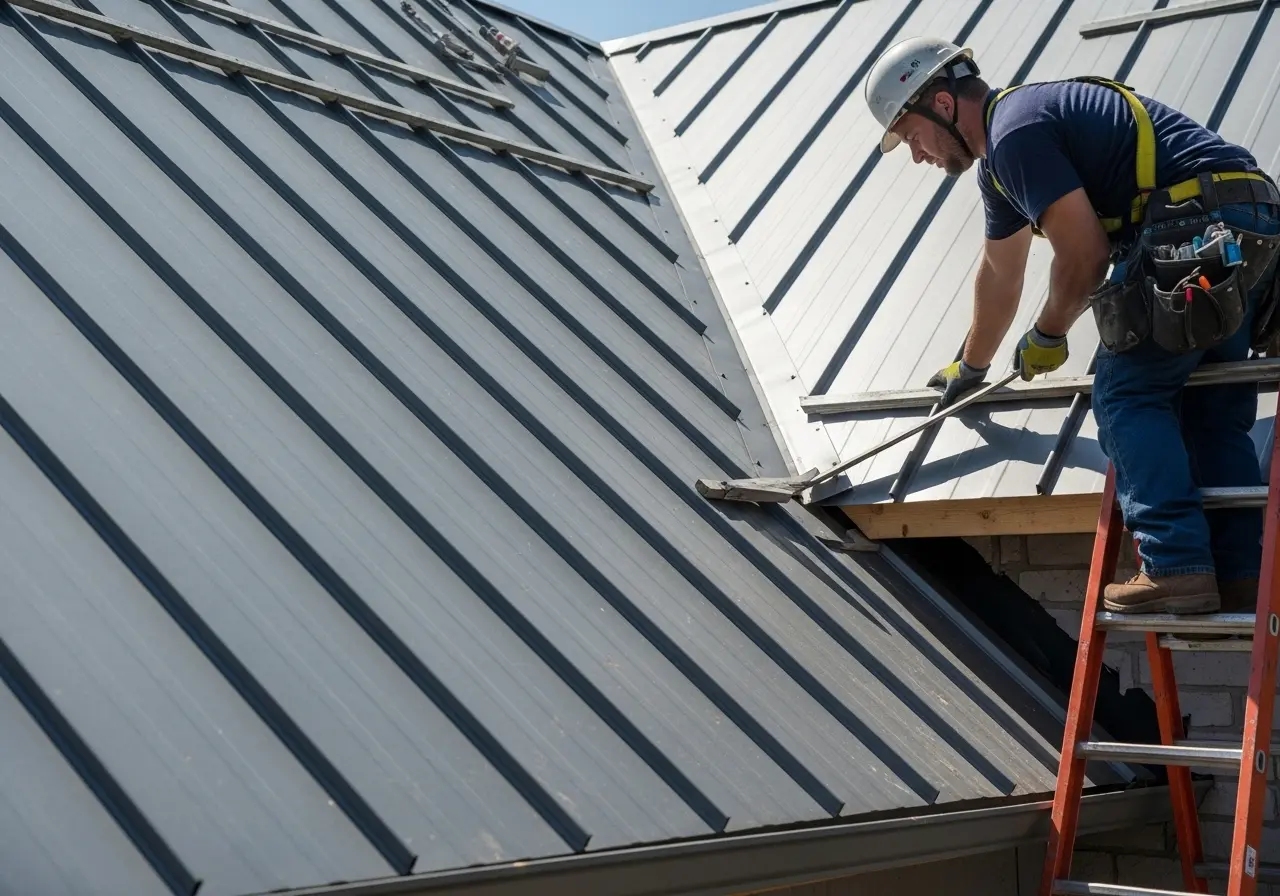
Common Mistakes When Painting Roof Shingles
Skipping thorough cleaning causes the most painting failures. Dirt, oils, and biological growth prevent adhesion regardless of paint quality. Using standard house paint instead of roof-specific coatings guarantees failure within months. Painting in poor weather—rain within 48 hours before or after, high humidity, extreme temperatures—ruins adhesion and curing.
Applying paint too thick creates cracking as coating cures. Insufficient drying between coats traps solvents and moisture. Ignoring underlying damage means painting over problems that continue worsening. Perhaps the biggest mistake: painting severely deteriorated shingles that need replacement, wasting money on roofs that fail within 1-2 years anyway. Avoiding these errors requires understanding common repair mistakes that plague DIY projects.
Professional Roof Assessment in Northern Virginia
Reston Roof provides honest evaluations of whether painting makes sense for your specific roof. Our experienced team inspects shingle condition, identifies hidden damage, and compares painting costs versus replacement value. We explain all options transparently, helping you make informed decisions based on your timeline and budget.
Serving homeowners throughout Northern Virginia including Reston, Fairfax, Arlington, and surrounding areas, we deliver quality workmanship whether you choose painting, repairs, or replacement. Contact Reston Roof at (571) 453-6515 for thorough roof assessment and recommendations you can trust for your home's protection.
